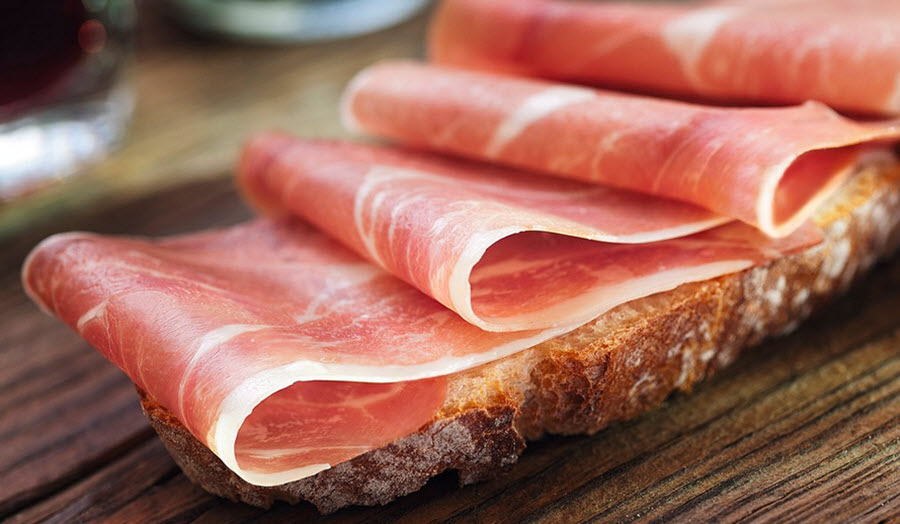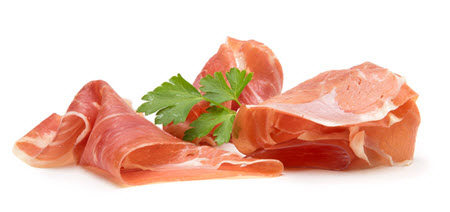
Jamón serrano is a type of dry-cured ham from Spain. It is usually served in thin slices, but some recipes call for diced jamón serrano instead. Jamón serrano is typically sold in thin slices, in chunks or complete with the bone remaining.
The name Jamón serrano means “ham from the mountain range”. Traditionally, the little buildings erected to hang the hams in during the long drying period (up to eighteen months) were placed at higher elevations than the farming village, and this is probably how the ham got its name.
Jamón serrano is not the same thing as jamón ibérico. Jamón ibérico is only made from black Iberian pigs, while Jamón serrano can be made from many different types of pigs. Commonly utilized pigs include a landrance breed of white pigs and a commercial breed called Duroc. Generally speaking, jamón ibérico tends to be more expensive than jamón serrano.
Jamón serrano has TSG status within the European Union. TSG is one of three European Union schemes for geographical indications and traditional specialities. The TSG status means that only hams that fulfil the requirements for jamón serrano are allowed to be marketed as jamón serrano and be marketed with the TSG logo within the European Union.
 Buying jamón serrano in the United States
Buying jamón serrano in the United StatesJamón serrano can be found in well-assorted supermarkets and delis, as well as in speciality shops focused on Spanish delicacies or Mediterranean delicacies. Packaged jamón serrano can be ordered online, but be careful before you place your order with a seller located outside the United States since meat import is heavily regulated and also subject to import duties. That is why even jamón serrano varieties that aren’t very expensive in Europe can be quite pricey once they reach the U.S. vendors. The duties imposed on meats imported from the European Union are not insignificant and there is also some paper work associated with importing meat that hikes up the administrative costs associated with meat import.
The three most common types of jamón serrano are Bodega, Reserva and Gran Reserva. Gran Reserva is dry-cured for the longest time and is the most expensive type.
So, why are some people prepared to pay more for a longer dry-curing period? A ham that has been dry-curing longer will be drier and will have had to mature more. Just as with certain wines and cheeses, many people appreciate the complex flavours that develops when a jamón serrano is cured for a long time.
The flavour of a good Gran Reserva is really intense and the texture is also different compared to that of a Bodega or Reserva since the Gran Reserva is so dry. With a Gran Reserva, you are in a way paying for “super concentrated meat” since so much of the liquid has left the ham and doesn’t contribute to its weight any more.